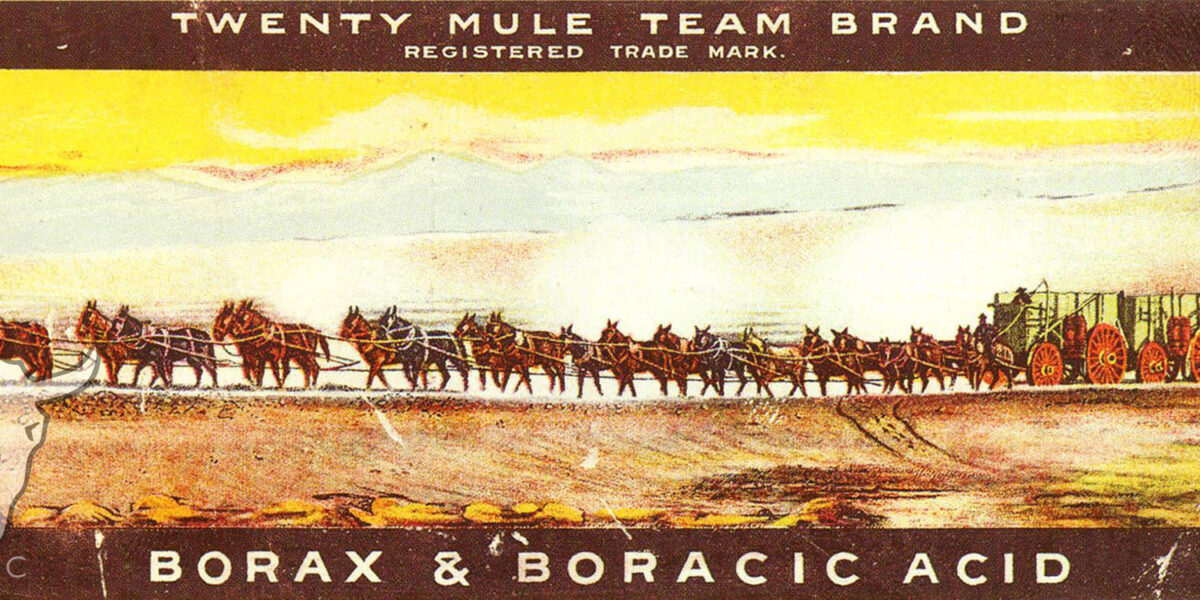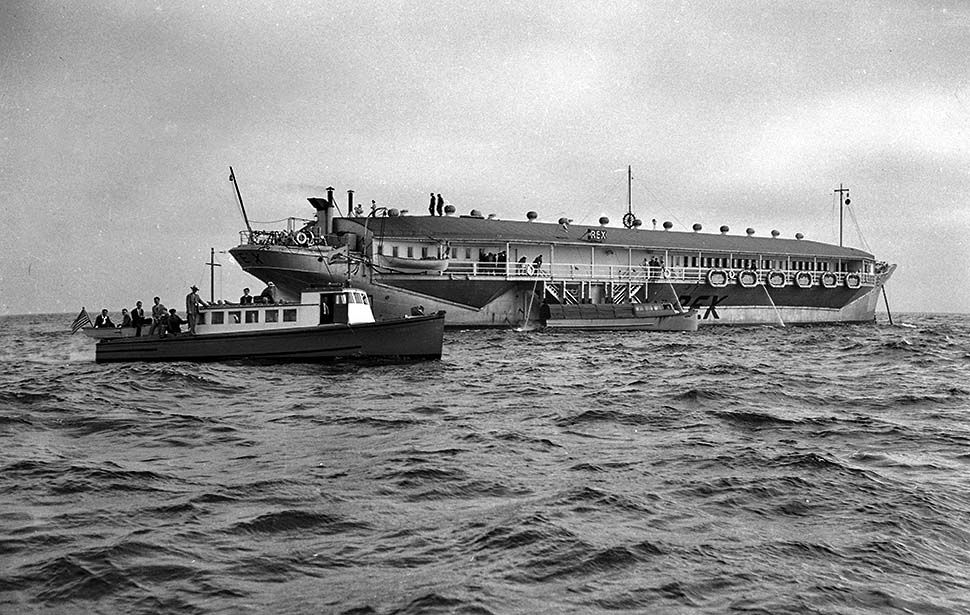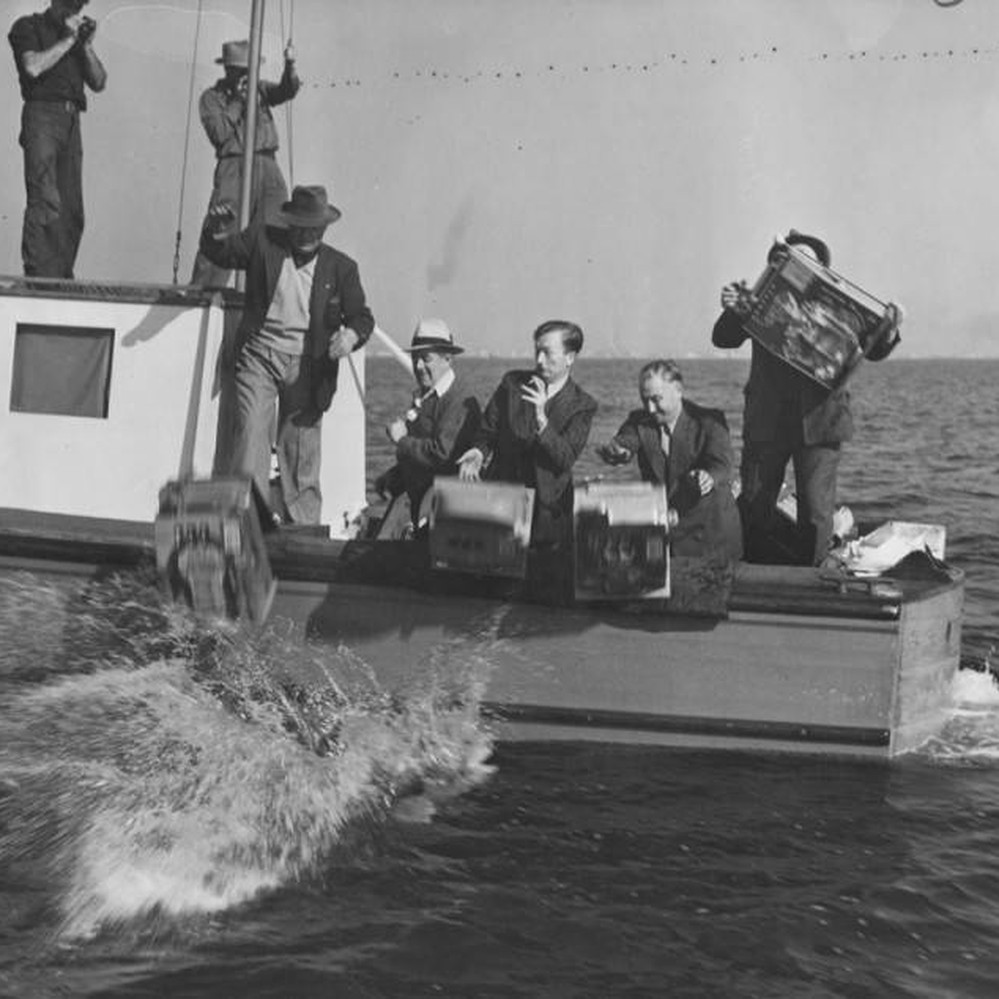From Borax to babes, blow and blackjack
Before the freight trains tracks were laid there were trains of another sort winding their way toward the California shore. Some trains were miles long with up to 500 mules divided into teams of 10 or 20. The most famous one was the 20 Mule Team from Death Valley.
The mule teams hauled borax, wheat, tar and all manner of material to a rail head in Mojave which then went to Los Angeles to be reloaded on wagons and on to Shoo Fly Landing.

The arrival of the railroads brought an immediate halt to these colorful caravans. And when the railroads came west they came with a vengeance. Two rival companies vied for business and in 1886 a price war broke out. A one-way ticket from St. Louis was $125 in 1886. On March 6th 1887 it was $12. By the 9th it fell to $4 and a few days later you could go 2/3rds of the way across the United States for $1. Tens of thousands swarmed aboard the trains. This led to the first real-estate explosion in Los Angeles and vast swaths of property were quickly carved up into lots. These lots were traded like hot internet stocks and as long as the lots kept flipping everyone was making money. Finally a shortage of hard cash lead to a resounding crash. Twas ever thus, eh?
A small settlement arose called Shoo Fly Landing near the pier where goods were loaded aboard ships bound for the east and the Orient. Shoo Fly Landing didn’t seem quite dignified enough so the place was renamed: Santa Monica. A big mistake in my opinion. Before the age of the automobile and the trolley, Shoo Fly was a full day’s wagon ride from Los Angeles. Once there was a way to get to the beach more quickly everybody showed up and the wild rumpus began. Santa Monica had its pleasure pier like so many towns but they had a twist that made it special. Gambling. The pier in Santa Monica was the departure point for the most notorious gambling center of the world.

In the 1920s gambling was illegal in the United States (except for Nevada) so visionary businessmen bought ships and anchored them outside the 3-mile limit in international waters. They opened for customers and the customers came. Talk about a floating craps game! The greatest of the ships was the S. S. Rex. Big Tony Cornero, a convicted bootlegger recently sprung from prison, opened the Rex 3.1 miles offshore. The $600,000 project was financed by the authentic gangster Bugsy Siegel and George Raft who played gangsters in the movies.

The ship could accommodate 2,000 guests at a time and had a staff of 325. The main ballroom featured an orchestra which in high season played 24 hours a day, a dance floor to cut the Charleston on, and, more importantly, a palatial casino in which to lose the rent money. There were hundreds of slot machines, a 400-seat bingo parlor, and a horse parlor where the results of the races were beamed in by shortwave radio. Gamblers could pick from craps, roulette, blackjack, chuck-a-luck, high spade, wheel of fortune, Chinese lottery, stud poker, faro and a high stakes poker game in the captain’s cabin when available. Since there was no captain, it was frequently available. The operation was estimated to net Big Tony $300,000 per month. This income wasn’t taxable as the ship was not in the United States. People were simply mad for The Rex.

The first police raid
Some bluenose shore dwellers looked upon this armada anchored in front of their town with horror. There was endless (well, almost) booze (during Prohibition). And sure, there were narcotics, hookers and gambling but a person has to have fun right? Well Santa Monica Police Chief Robert ‘Dick’ Dice didn’t think so and he tried to kill the fun by leading a charge on The Rex. Big Tony was not one to give up easily and he held the cops off for 8 days with high-pressure fire hoses in what came to be known as the Battle of Santa Monica Bay. He finally surrendered claiming he needed a haircut. The fact was they had run out of cocktails.
The DA maintained that the Rex and the other ships were actually not outside the 3-mile limit because Santa Monica Bay wrapped around in such a fashion that it created an inland waterway. Big Tony presented evidence that the bay—a body of water surrounded by water on three sides was actually, in fact, a bight—a coastal indentation. The judge agreed with Big Tony on appeal. Big Tony immediately reopened but was finally forcibly evicted in 1939 when the State Attorney General, Earl Warren, raided all the ships and tossed the gambling equipment into the sea where it remains to this day.

Slot machines get wet
Big Tony moved to Vegas where he would be more appreciated and launched the S. S. Rex Casino.

Later he opened the Stardust Hotel and Casino. Big Tony became known as Tony the Hat and was gunned down and survived more than once. He was eventually poisoned (he had gotten upside down with the founder of the Vegas gambling scene the mobster Meyer Lansky) as he was playing craps and that was it for Big Tony the Hat.

And what the heck is Chuck-a-luck?






Thanks Jamis. I always wonder how much of this information is factual, and how much is made “print ready” for the purposes of entertaining your captive audience.
Places and stuff we would never know
but thanx to you Booze and Blow
aye captain another great voyage
thanx
My late father told me about the floating casinos when I was a wee lad. Thanks for adding colorful details!
Your passion for retelling intriguing and entertaining historical stories reveals itself in your writings. You seem to be having as much fun as we are reading them. Ciao
Reminds me of when they mysterious Google Glass Store floated into the bay. https://www.cnet.com/news/san-franciscos-bay-barge-mystery-floating-data-center-or-google-glass-store/